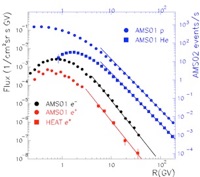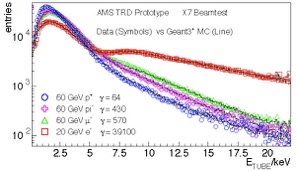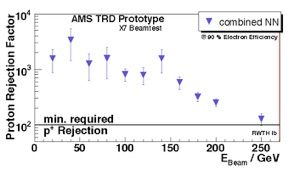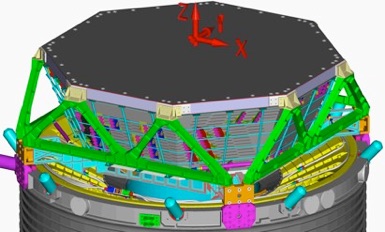
Transition Radiation (TR) photons are soft X-rays peaking around 5 keV. With a low probability on the order of α=1/137 TR photons are generated when a boundary with a change in the dielectric constant is crossed by a charged particle (energy E, mass m) with a relativistic Lorentz factor γ=E/m above a threshold of around 500 and are emitted colinear with the primary particle. Thus primary protons up to 300 GeV can be distinguished from positrons of same momentum in a suitable detector recording both the direct ionization signal from the primary particle and the TR photons after a radiator with a large number of TR boundary crossings.
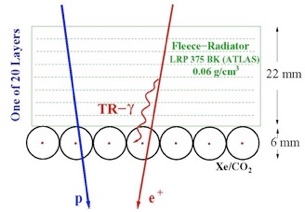
The construction of the 328 straw modules for the AMS TRD has been completed in January 2005. The photo below shows the integration into the octagon support structure.
The integration of the TRD was completed in April 2006 and the integration into AMS-2 in October 2009. More Pictures from the TRD construction can be found here.
The performance of the TRD was evaluated in 2000 in a test beam at CERN. 3 million events providing signals for protons, electrons, muons and pions at energies from 5-250 GeV have been recorded. Muon events have been used for an inter-calibration of the individual straws to a relative accuracy of 2%.
Bibliography:
-
(1)Ph. v. Doetinchem and others, „Performance of the AMS-02 Transition Radiation Detector“, Nucl. Instrum. Meth. (2006) A558, 526-535 (astro-ph/0608641).
